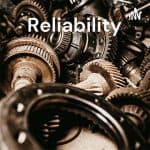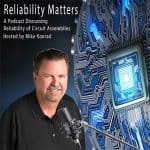
FMEA and AI
Abstract
Carl and Fred discuss Failure Mode and Effects Analysis and Artificial Intelligence. There are emerging integration opportunities and challenges, which will be discussed in this podcast.
ᐅ Play Episode
Your Reliability Engineering Professional Development Site
by Carl S. Carlson Leave a Comment

Carl and Fred discuss Failure Mode and Effects Analysis and Artificial Intelligence. There are emerging integration opportunities and challenges, which will be discussed in this podcast.
ᐅ Play Episode
by Akshay Athalye Leave a Comment

So grab your hard hat and let’s break ground on some eye-opening conversations that can transform the way you think about reliability in mining.
If you have a question and want to contact Miguel, you can get in touch via Linkedin.
by Carl S. Carlson Leave a Comment

Carl and Fred discuss an interesting question from an Accendo listener. The question has to do with what is called NUDD: New, Unique, Difficult, Different.
Specifically the listener’s management wanted to know if their NUDD process could replace FMEA.
ᐅ Play Episode
by Fred Schenkelberg Leave a Comment

Life testing a product or component, at times, involves months and months of testing. Even accelerated life testing can take a long time, given the limitation on our ability to cause the proper acceleration for meaningful results. So, what is one to do if waiting 3 months for test results is unacceptable?
Let’s explore a few alternatives along with the pros and cons. We examine using our knowledge and the knowledge of others to streamline the testing or avoid it altogether. We also need to consider why we need to estimate life in the first place. Sometimes, estimating the life of something is not all that useful or valuable. [Read more…]
by Mike Konrad Leave a Comment

Today, we’re diving into one of the most transformative innovations of our time: electric vehicles and the vast infrastructure needed to support their growth.
Joining us is Brian O’Leary, Global Head of of e-Mobility & Infrastructure at Indium Corporation, a leading expert with deep insights into the electronic assembly industry and its critical role in the EV revolution.
As electric vehicles continue to redefine the future of transportation, the reliability and scalability of the infrastructure that powers them—particularly public EV charging stations—have become pivotal challenges.
The electronic assembly industry is at the heart of these systems, from the semiconductors enabling fast charging to the sensors ensuring safe and efficient operation. However, with nearly 26% of public EV charging stations estimated to be non-functional at any given time, reliability remains a significant hurdle.
This episode will explore the major reliability issues plaguing public EV charging stations, including power instability, component failures, and environmental challenges.
How innovations in electronics design and assembly can address these challenges, from improving thermal management to leveraging advanced materials like those developed by soldering materials manufacturers.
The exciting opportunities for the electronics industry to lead the charge in building a more resilient, reliable, and efficient EV infrastructure.
Brian O’Leary brings a wealth of knowledge on how advanced materials, smart assembly techniques, and innovative designs can solve these pressing issues and accelerate the adoption of electric vehicles.
Together, we’ll review the technical challenges, explore solutions, and look ahead to the bright future of electric mobility.
Brian O’Leary’s Contact Info:
boleary@indium.com
https://www.indium.com

Kirk and Fred discuss the subject of reliability and how appliance manufacturing companies may design for a limited life in order to sell new models.
ᐅ Play Episode
by Dianna Deeney Leave a Comment

When you perform analysis and share it with others to make a decision, do you sometimes just send the file with a blurb in an email? Only to not quite remember what you did later, when you need it most.
There’s a simple, relatively fast thing to do: a Mini Report. And it provides so much more than just jogging a memory.
Mini reports are a valuable tool for communication in engineering. By using them, engineers can enhance team collaboration, streamline decision-making, and provide mentorship opportunities to junior colleagues.
We talk about:

Dianna and Fred discuss requests to engineers to make it less robust.
ᐅ Play Episode
by Dianna Deeney Leave a Comment

Dianna and Fred discuss conference value: maximizing the benefits of conferences and assessing their value for participation.
ᐅ Play Episode
by Christopher Jackson 2 Comments

Chris and Fred discuss how to deal with trying to find ‘reliability characteristics’ when you don’t have a lot of information. Sound familiar?
ᐅ Play Episode
by Christopher Jackson Leave a Comment

Chris and Fred discuss how we do warranty analysis … which usually means trying to understand how many things fail during a warranty period (before you need to start paying for it …) Where do you start?
ᐅ Play Episode
by Dianna Deeney Leave a Comment
by Dianna Deeney Leave a Comment


Celebrating a year of insights and community growth, this episode reflects on key moments, popular episodes, and the future direction of the Quality During Design podcast.
2024 included episodes focused on actionable insights, deep-dive series, expert interviews, and insightful book reviews.
With gratitude for listeners and a commitment to quality, we look ahead to new topics and collaborations for 2025.
by Mike Konrad Leave a Comment

Today we’re celebrating the end of another incredible year.
This isn’t just any episode—it’s a time to reflect on the journey we’ve been on together, highlight some milestones, and share a heartfelt thank you to everyone who has made this podcast such a success. Can you believe it?
Reliability Matters has now released 159 episodes! It feels like just yesterday we started this podcast with the mission to explore how industry experts and their knowledge contribute to the reliability of electronics. And here we are—growing, learning, and making a real impact in our field.
But here’s what blows me away the most: over 85,000 downloads. That’s not just a number—it’s a testament to you, our amazing audience.
Whether you’re listening in your car or on your morning jog, or watching this on our YouTube channel, you’ve made this podcast part of your journey. And for that, I’m deeply grateful.
This year alone, we’ve covered some fascinating topics. From ultra-high-density interconnects to post-reflow inspection, from thermal profiling to cutting-edge coating materials—we’ve explored it all. Along the way, I’ve had the privilege of sitting down with some of the brightest minds in the electronics industry.
Each guest has brought their unique insights, helping us all better understand the intricate science and art behind building reliable electronics.
To my incredible guests—thank you. Your willingness to share your expertise, stories, and even a few laughs has been the lifeblood of this podcast. Every episode is a reflection of your generosity and brilliance.
I also want to give a shout-out to you—yes, you. Whether you’re a long-time listener or you just discovered us this year, you’re the reason I do this. The messages, the comments, the emails—it’s all so inspiring. When you tell me how a particular episode helped solve a problem, spark a new idea, or simply make your day better, it reminds me why Reliability Matters matters.
As we wrap up the year, I’m reminded of something I say often on this show: reliability isn’t just a goal; it’s a journey. It’s a series of choices, processes, and innovations that, together, ensure the technology we rely on lives up to its promise.
And this podcast? It’s a part of that journey. It’s a space where we can learn together, challenge assumptions, and stay ahead of the curve in an ever-evolving industry.
Mike Konrad’s Contact Info:
mike@mikekonrad.com
https://www.reliabilitymatterspodcast.com